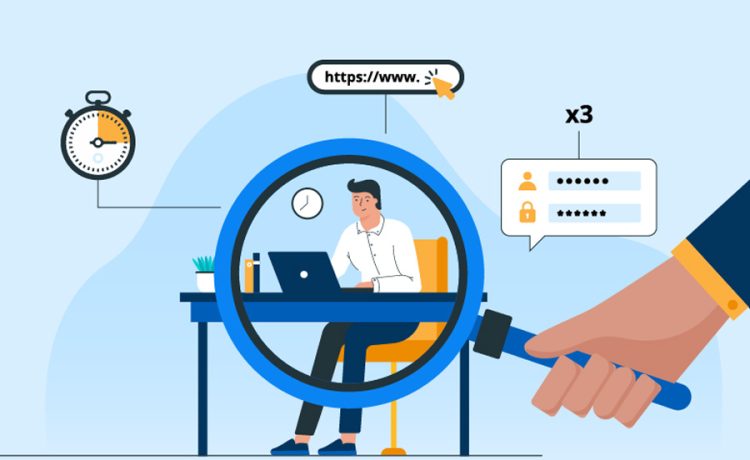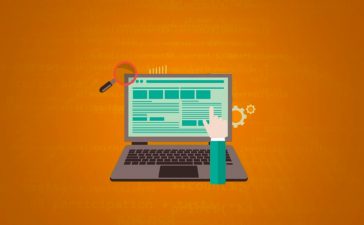Implementing an employee monitoring system can be a valuable strategy for enhancing productivity, ensuring data security, and maintaining compliance within your organization. A recent study revealed that by March 2024, nearly half of all employees acknowledge that their online actions are tracked by their employers. Here’s a step-by-step guide to help you implement an employee monitoring system effectively.
How to Implement an Employee Monitoring System: A Step-by-Step Guide
Step 1: Define Your Objectives
Before selecting a monitoring system, it’s crucial to define what you aim to achieve. Are you looking to boost productivity, secure sensitive data, ensure compliance, or perhaps all of the above? One of the best products for all of these purposes is Controlio. Understanding your specific goals will guide you in choosing the right software and setting the appropriate parameters. Clear objectives will also help you communicate the purpose of the monitoring system to your employees, which is vital for maintaining transparency and trust. For example, if your staff operates Mac computers, it’s important to choose a Mac & PC employee monitoring software compatible with your team’s devices.
Step 2: Choose the Right Software
With your objectives in mind, research and select a monitoring software that aligns with your needs. Consider factors such as the size of your team, the nature of your work, and the level of monitoring required. For example, if you’re primarily focused on productivity, a tool that tracks time spent on tasks, websites, and applications may be sufficient. However, if data security is a concern, you might need more robust software with features like keystroke logging, file tracking, and real-time alerts.
Ensure that the software you choose is user-friendly and offers customizable settings. This allows you to tailor the monitoring to different roles within your organization, ensuring that it is neither too intrusive nor too lax.
Step 3: Develop a Clear Policy
Once you’ve selected your software, the next step is to develop a clear monitoring policy. This policy should outline what will be monitored, how the data will be used, and the measures in place to protect employee privacy. Be specific about the types of activities that will be tracked, such as internet usage, emails, or time spent on certain applications.
Your policy should also address how the monitoring data will be stored and who will have access to it. This transparency is crucial in building trust with your employees and ensuring they understand that the system is in place to support the company’s goals, not to invade their privacy.
Step 4: Communicate with Your Team
Communication is key when implementing an employee monitoring system. Inform your employees about the new system well in advance, explaining the reasons for its implementation and how it will benefit the organization. Make sure to address any concerns they may have, and be open to feedback.
By involving your employees in the process and being transparent about the system’s purpose and functionality, you can mitigate any feelings of distrust or anxiety. This step is critical in maintaining a positive work culture, even as you introduce more structured monitoring.
Step 5: Train Your Employees
After communication, the next step is training. Provide your employees with clear instructions on how the monitoring system will work and how it might affect their daily routines. This training should also include a review of the new policy, ensuring that everyone understands their rights and responsibilities.
Additionally, offer training on best practices for productivity and security that align with the monitoring system. This not only helps employees adapt to the new system but also encourages them to view it as a tool for personal and professional development.
Step 6: Monitor and Adjust
After the system is live, monitor its effectiveness regularly. Review the data it provides to ensure it is meeting your initial objectives. Are productivity levels improving? Is the data being used to improve workflow efficiency? Based on your observations, you may need to adjust the system’s settings or provide additional training.
It’s also important to remain open to feedback from your employees. If they feel the system is too intrusive or not effective, consider making changes. An employee monitoring system should be dynamic, evolving with your business needs and the work environment.
Step 7: Review and Comply with Legal Requirements
Finally, ensure that your employee monitoring practices comply with local, state, and federal laws. This includes informing employees about the monitoring in advance and obtaining their consent where necessary. Regularly review your policy and practices to ensure ongoing compliance.
Implementing an employee monitoring system is a multi-step process that requires careful planning, clear communication, and ongoing adjustments. By following these steps, you can ensure that the system enhances productivity and security while maintaining a positive and transparent workplace environment. Remember, the goal is to support your team and business objectives, not to micromanage or invade privacy.













